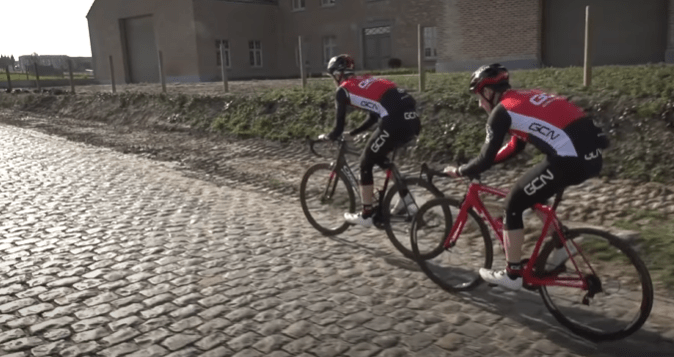

Improving road bikes can be a costly endeavor, but there are ways to make modifications that are not too expensive. However, when riding a road bike, it is important to remember that car drivers do not always understand that cyclists have the same rights as them. Therefore, it is recommended to signal your intent to cross the road and to be cautious of cars that are approaching at high speeds.
Additionally, when cycling on the road, be aware that overtaking maneuvers in the opposite lane are sanctioned by law. If cycling in a group, wait for enough space before overtaking. When cycling on a road with traffic lights and curves, it is essential to stay in line with the car’s rearview mirror to avoid any potential accidents.
Overall, following these tips for riding a road bike can help ensure your safety on the road while cycling.
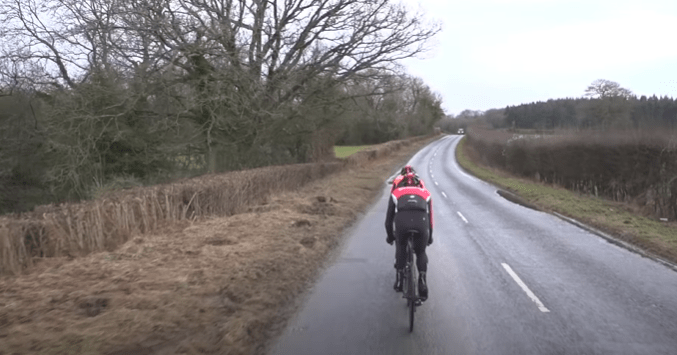

If you’re a cyclist, it’s important to keep in mind certain factors that can affect your performance and overall experience on the bike. These include factors that are independent of the bike itself, such as your heart rate, the power you exert on the pedals, your cadence, and even the clothes you wear.
In addition, it’s important to maintain your bike to ensure that it is operating at peak performance. This includes regularly checking and adjusting tire pressure, as well as taking your bike in for an MOT after the first hundred kilometers to adjust the spokes and ensure proper functioning.
When riding, it’s important to be mindful of how you handle certain situations. For example, when encountering irregularities in the road, it’s best to stand up to avoid bending the saddle frame. Similarly, when moving off curbs, it’s best to stand up rather than sitting with the seat. It’s also important to avoid going downhill while standing, as this can cause damage to the pedals and carriage.
Finally, it’s recommended to roll in a low gear to relieve stress on the pedals and increase speed. By keeping these factors in mind, you can have a more enjoyable and successful cycling experience.
Heart rate monitors are a useful tool for measuring the intensity of aerobic exercise, including cycling. They provide real-time data on heart rate, which is important for both performance and overall health.
Many heart rate monitors also offer additional features like speed, distance, and elevation tracking, as well as temperature monitoring.
Some heart rate monitors are designed to be worn on the wrist, such as the Garmin Forerunner 45, while others are integrated directly into the bike itself, such as the Bryton Rider 320.
These devices allow for easy comparison of performance with other cyclists or oneself, and there are many apps available, such as Strava, that can help track and analyze heart rate data.
Heart rate monitors are now considered an essential accessory for cyclists, just like glasses or gloves.
Power meters are a valuable tool for evaluating cycling performance as they provide real-time feedback on the power exerted on the pedals or cranks. Some power meters even assess the load on each leg separately, although this is typically unnecessary unless a cyclist has a lower extremity issue.
These devices are primarily intended for serious cyclists who want to optimize their training and performance, and may not be worth the investment for occasional riders due to their cost and potential need for additional equipment, such as a specific hub for the rear wheel.
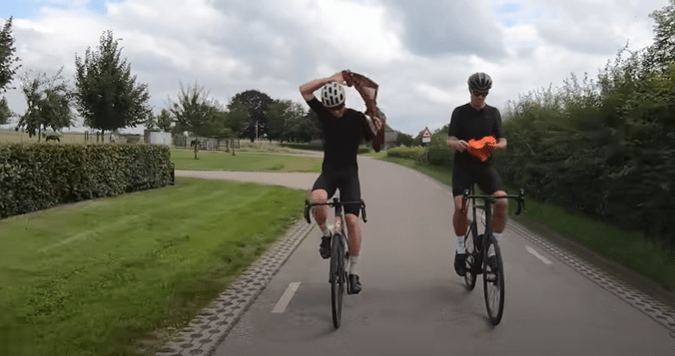

For novice cyclists who struggle to feel their progress or tend not to change their habits, cadence meters can be a helpful tool.
Typically, a suitable cadence is around 90 revolutions per minute, but this is not a strict rule, as even top-level professional cyclists such as Froome or Valverde exceed or fall below this value depending on the terrain they are cycling on.
One way to improve pedaling cadence is by using rollers, which allow for high-speed pedaling to build up muscle memory for maintaining a high cadence.
Overall, paying attention to cadence can help optimize cycling performance, but it’s important to remember that it’s just one aspect of many in training and performance.
The quality of cycling clothing has undergone a major transformation in recent times due to advancements in materials. Modern materials are much lighter, more adaptable to different body shapes, breathable, windproof, water-repellent, and waterproof.
It is important to note that a cyclist’s ability to regulate body temperature largely depends on the quality of their clothing. Wearing clothes that don’t breathe well can result in excess sweating and poor evacuation of sweat, leading to overheating and reduced performance.
On the other hand, modern clothing with improved evacuation capacity allows for better regulation of body temperature and improved performance. Uncomfortable sensations caused by overheating or cold weather while cycling can be avoided with the right clothing.
A biomechanical analysis, also known as bike fitting, involves evaluating a cyclist’s position on a particular bike and then adjusting the bike’s measurements to fit their body.
The main goal of this analysis is to improve cycling performance by optimizing the posture that should be maintained while cycling.
This study is particularly important for triathletes and is also recommended for other types of cyclists, especially for those who experience muscle discomfort in areas that are not typically affected while cycling.
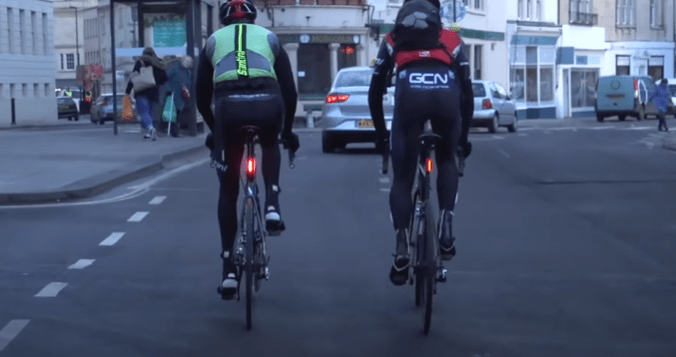

There are two types of movements that affect bicycles: translational movement and rotatory motion. In this section, we will focus on the first type.
How does weight reduction lead to better performance?
To understand this, we need to have some basic knowledge of physics. Kinetic energy is the energy required to move an object, and it depends on two factors: the mass and the speed of the object.
The larger the mass, the more effort is required to move it, and the greater the speed (acceleration), the more effort is required. This is where Newton’s Second Law comes into play.
The same is true for bicycles. The energy we put into the pedals, which is transferred to the cranks and then to the rear wheel via the chain, is known as kinetic energy. This depends on the mass of the cyclist and the bike, as well as the speed at which we are moving.
When an object is moved without being turned (such as the frame, handlebars, stem, saddle, seat post, controls, or brakes), there is only one type of speed: translational speed. Therefore, in this case, it does not matter which non-rotating parts are made lighter. It doesn’t matter where we save the weight as long as we achieve the desired weight reduction.
However, in addition to weight, other factors affect comfort, which ultimately leads to better performance. Using materials that can absorb vibrations can improve our performance. For example, it’s recommended to have a saddle that fits each individual’s anatomical characteristics and personal preferences.
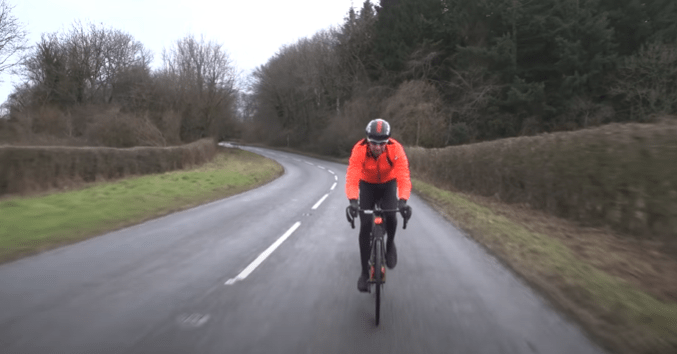

Bicycles have several components that move and rotate, including the wheels, pedals, connecting rods, and brake discs (if the bike has disc brakes). Among these, the wheels are the most important because they have a greater rotating mass located farther away from their axis.
As the wheels rotate, they also cause the bike to rotate and move, creating a second velocity called angular velocity. This angular velocity depends on how quickly the bike completes a turn and the radius of that turn. The faster the bike completes a turn, the more force is needed, and the greater the radius, the more force is required to make the turn.
Improving the components that move and rotate on a bike can enhance its performance, particularly the wheels. Upgrading the wheels can reduce rotational weight, which can increase acceleration and speed. Improved pedals and connecting rods can also make pedaling more efficient, allowing riders to generate more power with less effort. Additionally, upgrading to disc brakes can provide better stopping power and more consistent braking performance.
When it comes to bike parts that move and rotate, such as the wheels, pedals, connecting rods, and brake discs (if the bike has disc brakes), the wheels are the most important due to their distance from the axis and the resulting angular velocity. Angular velocity depends on the speed and radius of a turn, with a larger radius requiring greater force to exert. For parts with a small radius, such as pedals and cranks, the energy required to move them is minimal, while parts with a larger radius, like wheels, require more energy to rotate. Therefore, investing in lightweight and low-friction wheels is the most effective way to improve bike performance. For those with both road and mountain bikes, there are slight differences in improving performance between the two types of bikes.
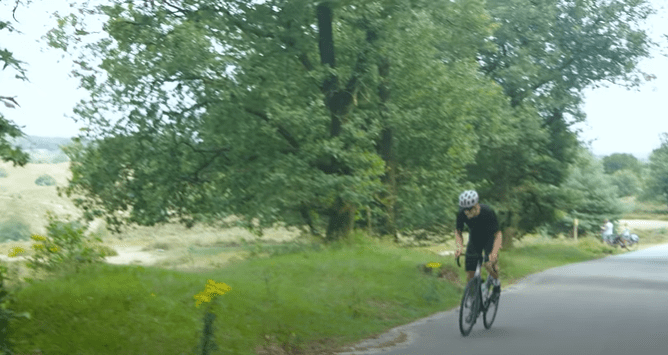

Another crucial component that impacts the rotation and movement of a bike is its tires, as they also have a large rotating mass. Therefore, investing in high-quality tires is essential for road cyclists. It’s also an affordable improvement that can significantly enhance performance.
We recommend upgrading to high-quality tires with a thickness of at least 25mm. If you frequently ride on roads with rough surfaces or live in areas with high rainfall, consider opting for 28mm, 30mm, or even 32mm tires.
Reducing the weight of the rest of the bike is also worth considering, but investing in high-quality wheels and tires should be the top priority. This is because the rotating mass of the wheels has a significant impact on the bike’s performance. As a result, upgrading to light wheels with minimal friction is highly recommended for optimal performance.
The tire size you can use on your bike depends on the wheels and the bike itself. Keep in mind that some older road bike models may not be compatible with tires larger than 25mm.
While tubeless tires are more commonly used in mountain biking, their popularity is increasing on the road. Tubeless tires have the advantage of using anti-puncture fluid which reduces weight and improves performance. They also maintain their shape even at low pressures, unlike traditional tires. As technology advances, it’s likely that tubeless options will become more widely available for road bikes.
The best performing tires in the market are tubular tires as they are the most shock absorbent and use the least energy. However, they are also the most expensive and require specific wheelsets. Tubular tires must be attached using double-sided tape or glue.
The smoothness of a wheel’s rotation is determined by its ratchet system, gears, and type of bearings. The quality of the bearings is also important, including how they are arranged (such as ball cage or integrated bearings) and the material they are made of (such as metal or ceramic).
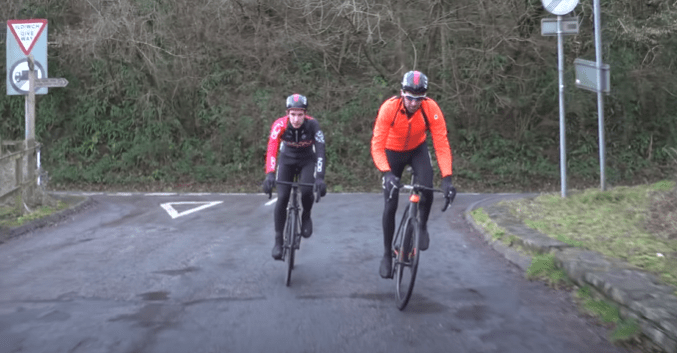

When looking to buy wheels, it’s important to consider their strength, stiffness (both lateral and torsional), and the quality of bearings used. Lower stiffness in these areas can result in energy loss, as some of the energy is used to bend the spokes, rim, and hub.
A rigid frame and wheels can lead to faster acceleration, but the weight of the wheel also has an effect on the gyroscopic effect. This effect causes the wheels to resist changes in direction, and the heavier the wheels and the more they lean, the greater the effect. This can make it feel like the wheels are heavier and harder to move from side to side.
Aerodynamics is becoming increasingly important when choosing wheels, as it plays a key role in the overall aerodynamics of the bike.
However, it’s important not to become too fixated on this issue. Although high profile wheels can improve aerodynamics, they’re heavier and can be dangerous in strong crosswinds. It’s best to stick to profiles between 40 and 50 mm for most situations, unless you’re doing long-distance triathlons or only ride on flat terrain with no wind, in which case larger profiles may be suitable.
When it comes to choosing the material for the wheels, it depends on whether you want low-profile wheels (below 30 mm) or higher profiles. If you choose higher profiles, it’s best to go for carbon rims, as the weight would be too high otherwise. For low profiles, there are still quality brands on the market offering aluminum rims. However, most users opt for medium wheel profiles with carbon rims when upgrading their wheels.
Finally, it’s important to note that there are various methods for attaching the wheels to the hub, and these can affect the overall strength and rigidity of the wheelset. For instance, the use of hub elbows that intersect two or three times can significantly differ from spokes that go straight into the hub.
We highly suggest seeking advice from our team of experts to help you find the wheelset that’s best for you. This will help you avoid choosing incompatible models that don’t suit your current bike.
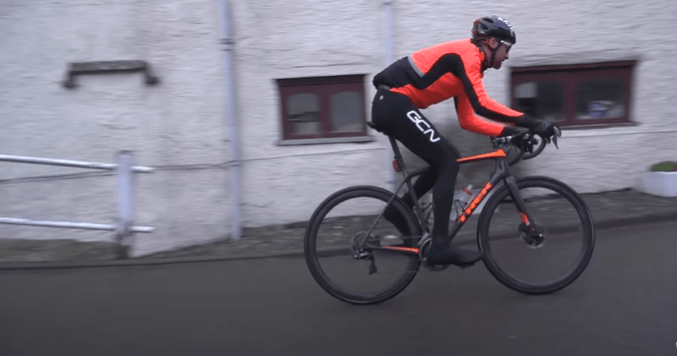

Lastly, it’s worth noting that while it’s not recommended to make adjustments to your road bike while riding, it’s important to prioritize proper bike maintenance. Mistakes made while on the road can be twice as costly as those made in the city since assistance may be scarce and the risk of a fatal accident is higher. Always ensure your bike is in good condition before setting off on your ride, regardless of whether you’re cycling in the city or out on the road.
